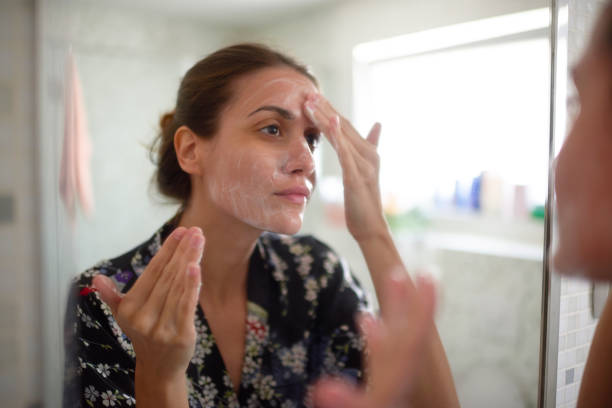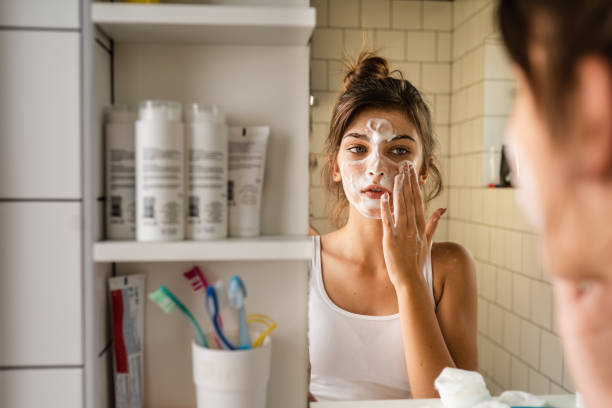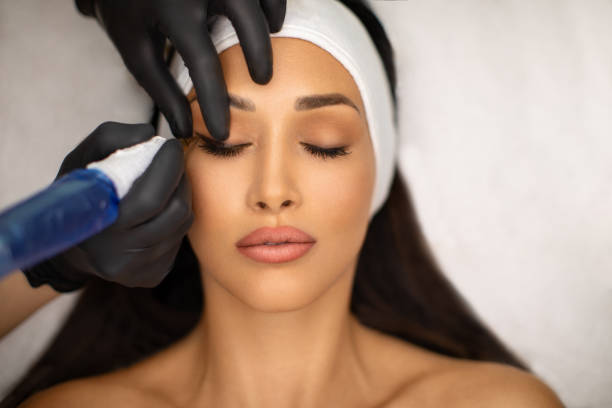Combination skin, a perplexing blend of oily and dry areas, requires a uniquely crafted skincare routine to maintain balance and vitality. Within this comprehensive guide, you’ll explore a daily ritual designed to cater to the dual nature of combination skin. From gentle cleansing to protective sun care, each step plays a pivotal role. A dedicated morning and evening regimen, complemented by weekly treatments, will leave your skin harmonized and radiant. Unleash the potential of your complex complexion as we unveil the perfect step-by-step skincare routine.
Understanding Combination Skin

Combination skin is characterized by an oily T-zone, encompassing the forehead, nose, and chin, while the cheeks and other areas often remain dry or normal. This duality presents a unique set of challenges, as products must be carefully selected to address both sebum production and moisture requirements. However, by tailoring your skincare approach, you can bring equilibrium to your complexion, ensuring each area receives appropriate care.
Morning Skincare Ritual for Combination Skin

Step 1: Gentle Cleansing
The foundation of any skincare routine, particularly for combination skin, begins with a gentle cleanse. This crucial step removes overnight build-up of oils and impurities while preparing the skin for subsequent products. Opt for a mild, sulfate-free cleanser that can purify without over-drying the skin. Those with combination skin should use a cleanser that respects the skin’s natural barrier, ensuring the oily areas aren’t aggravated and the dry patches aren’t stripped of necessary moisture.
Step 2: Toning to Balance
Toning is essential in restoring your skin’s natural pH levels post-cleansing. For combination skin, seek out an alcohol-free toner that contains soothing ingredients like chamomile or green tea. The right toner can refine pores in oily zones without dehydrating the dry regions of the face. Toners prepped with skin-loving ingredients also provide an initial layer of hydration and prep the skin for the next steps in your routine.
Step 3: Targeted Treatment Application
Addressing specific skin concerns is best done through targeted treatments such as serums or spot treatments. Those with combination skin may require different treatments for various areas—such as a salicylic acid-based product for the T-zone to control oil and an antioxidant-rich serum for dry areas to nourish and protect. A balanced application ensures each part of your face gets the care it needs without exacerbating any particular concern.
Step 4: Lightweight Moisturization
Hydrating a combination skin calls for a moisturizer that’s light enough to not clog pores yet hydrating enough for dry spots. Look for lotions or gels that are non-comedogenic and include humectants like hyaluronic acid or glycerin, which effectively draw moisture to the skin. It’s crucial to apply the moisturizer evenly, allowing it to absorb fully before proceeding to the final step of the morning routine.
Step 5: Sun Protection – A Crucial Step
Sunscreen is a non-negotiable final step in the morning skincare sequence. A broad-spectrum SPF of 30 or higher shields the skin from harmful UVA and UVB rays. Combination skin types should go for sunscreens with a lightweight formula, free from oils that could potentially increase shininess in the T-zone while providing sufficient protection and moisture for the rest of the face.
Begin each day with this nourishing morning skincare routine specifically designed for combination skin:
- Gentle Cleansing
- Toning to Balance
- Targeted Treatment Application
- Lightweight Moisturization
- Sun Protection
Evening Skincare Routine for Combination Skin
Step 1: Effective Double Cleansing
Evening care starts with double cleansing, which involves using an oil-based cleanser followed by a water-based one. This thorough cleansing method removes makeup, sunscreen, and the day’s grime, ensuring a pristine canvas. For combination skin, the first cleanse dissolves oil-based impurities without prompting excess sebum production; the second cleanse refreshes and readies the skin for treatment.
Step 2: Exfoliation to Renew
Exfoliation, crucial for removing dead skin cells and promoting cell turnover, should be a regular but not daily part of the routine. Combining both physical and chemical exfoliants ensures thorough sloughing without causing irritation. For combination skin, focus on the T-zone when using stronger exfoliants and be gentler on drier areas to prevent over-exfoliation.
Step 3: Nourishing Treatments
The evening is an optimal time for intensive treatments as the skin naturally repairs itself overnight. Products with retinoids, peptides, or ceramides can help renew the skin and tackle concerns from wrinkles to acne. Apply with a lighter touch in oily areas and be more liberal where the skin feels parched.
Step 4: Hydration and Repair
Lock in the benefits of your evening treatments with a final layer of hydration. Overnight masks or richer creams can be beneficial, delivering moisture and active ingredients while you sleep. Tailoring the amount you apply to the different zones of your combination skin ensures every area receives just what it needs to remain balanced.
End your day by giving your skin the restorative care it needs with this effective evening routine:
- Effective Double Cleansing
- Exfoliation to Renew
- Nourishing Treatments
- Hydration and Repair
Weekly Extras for Combination Skin Care
Apart from the daily steps, incorporate these weekly treatments to boost your combination skin’s health and glow:
Masks and Peels
Masks and peels offer targeted treatment that addresses specific skin needs once or twice a week. For combination skin, a clarifying mask can be used on the T-zone, while a hydrating mask might be better for the cheeks. Peels containing AHA/BHA can be applied sparingly to aid in cellular turnover and to keep pores clear without over-drying.
Here’s a table showcasing recommended weekly treatments for combination skin:
| Area | Mask Type | Peel Type | Frequency |
|---|---|---|---|
| T-Zone | Clay or Charcoal Mask | BHA Peel | 1-2 times per week |
| Cheeks | Hydrating Mask | Gentle AHA Peel | Once a week |
Lifestyle Tips for Maintaining Combination Skin
Skincare isn’t just about the products applied; it’s also about lifestyle choices that can affect your skin’s balance. A diet rich in antioxidants, adequate hydration, regular exercise, and stress management are fundamental to maintaining healthy skin. Don’t forget that quality sleep is essential for the body’s repair process, including your skin’s restoration. Bear in mind these holistic practices to support your skin regimen.
Conclusion
Mastering the art of caring for combination skin is about finding harmony in your skincare routine. It’s a delicate balance of addressing the oily and dry parts of your face, all while catering to your skin’s daily and seasonal needs. Whether it’s through cleansing, toning, or the application of targeted treatments and moisturizers, each step carries importance. Embrace this personalized skincare strategy and watch your skin thrive with a newfound equilibrium.
FAQs About Skincare for Combination Skin
FAQ 1: How often should I exfoliate combination skin?
Exfoliate combination skin 2 to 3 times a week, focusing more on the oily T-zone areas. Opt for gentler exfoliants or methods on the drier parts to avoid irritation.
FAQ 2: Can I use the same moisturizer for both oily and dry areas of my combination skin?
Yes, you can, but you may need to apply different amounts based on the skin’s needs in each area. Consider a lightweight formula that provides adequate hydration without causing congestion.
FAQ 3: What ingredients should I avoid in skincare products for combination skin?
Avoid heavy, pore-clogging ingredients like petroleum and mineral oil in the T-zone. Also, stay clear of harsh alcohols that could dry out already parched areas.
FAQ 4: Should I use different skincare routines for summer and winter?
Yes, it’s essential to adjust your skincare routine in response to seasonal changes. In summer, you might lean towards lighter formulations, while in winter, you may require more hydration.
FAQ 5: Is it necessary to use a toner in my combination skin routine?
Toners can be quite beneficial for rebalancing the skin’s pH and providing initial hydration. Look for one that is alcohol-free and contains soothing ingredients.




